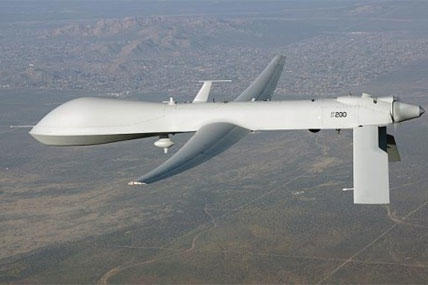During the largest military exercise the U.S. undertakes with any single nation, new tech debuted to give soldiers unprecedented access to drone video feeds.
The biennial Exercise Talisman Saber 2013 combines more than 28,000 military personnel from the U.S. and Australia; it began July 15 and is due to finish Aug. 5. The exercise aims to improve combat readiness and cooperation between the two militaries, which will work together on realistic conflict scenario involving humanitarian assistance and disaster relief operations.
And they'll see through the eyes of a drone.
New tech called Live Aerial ISR Link, or LAIL, will give U.S. soldiers exactly that sort of access to video feeds during combat operations. (The "I" stands for ISR, a common military acronym for Intelligence, Surveillance and Reconnaissance.)
Imagine a unit were deployed in Syria, where there are concerns about chemical and biological weapons. The Army's future unmanned systems like Grey Eagle, Hunter and Shadow configured with special sensors would be flying the skies scanning for WMD threats. While on the move, LAIL would give a soldier up-to-the-minute data on any such weapons detected by the drones.
The first LAIL systems were deployed to Afghanistan; the next generation debuted in Australia this week.
LAIL initially kicked off after a unit returned from Operation Enduring Freedom and submitted a 10-line request for exactly this innovation. The Army's real life McGyvers -- known as the Rapid Equipping Force or REF -- partnered with several other military agencies to make it happen.
When the first version rolled out, it was well received by soldiers – but REF didn't stop there.
The REF team had been working with the military tech agency DARPA, Small Unmanned Aerial Systems (SUAS), and Nett Warrior. They expanded further, adding researchers at Natick, Joint Special Operations Forces, the USAF and more to build version 2.0.
The result? LAIL 2.0 provides even better capability, range and frequency.
More robust and downsized, the new version receives additional signals at further ranges and gives soldiers even more access to additional frequency bands, and it
allows soldiers to obtain video feed from additional platforms.
The LAIL program and its recent upgrades mean soldiers on the ground can now have real-time access to video feeds from assets like Apaches and Predators that would have previously only been shared at higher echelons.
These sorts of advances mean faster and more accurate decision making in battle.
The system will improve information sharing and navigation, which translates into reduced risk of friendly fire while improving lethality during missions.
LAIL will feed into the One System Remote Video Terminal as well as being integrated with the Army approved hardware and the Nett Warrior Handheld device.
One System Remote Video Terminals will allow a soldier to direct more than one unmanned aircraft from one signal control system.
The Nett Warrior program intends to give dismounted soldiers a far superior system for situational awareness during combat operations.
REF recently provided LAIL technology to the 1st Battalion (Airborne), 501st Infantry Regiment, giving them the ability to receive ISR video feed while conducting tactical operations throughout a broad operational area.
The 501st is the quick reaction force for PACOM and they will debut the REF-provided LAIL devices during Talisman Saber.
The 501st fly out today, will be refueled while airborne, jump into the exercise and use the LAIL devices.
Jointly sponsored by the U.S. Pacific Command and ADF Headquarters Joint Operations Command, Talisman Saber 2013 includes U.S. Army, Navy, Marine Corps and Air Force, the ADF and other government agencies from each country.
Ships from the George Washington Carrier Strike Group and Bonhomme Richard Amphibious Ready Group are joining personnel from the U.S. Marine Corps, U.S. Air Force, and U.S. Army units. They will work alongside their counterparts in the Royal Australian Navy, Royal Australian Air Force and Australian Army.
Talisman Saber events will take place inland at Queensland locations, ports like Brisbane and Gladstone as well as out on the water in the Coral Sea.
Ballet dancer turned defense specialist Allison Barrie has traveled around the world covering the military, terrorism, weapons advancements and life on the front line. You can reach her at wargames@foxnews.com or follow her on Twitter @Allison_Barrie.
or follow her on Twitter @Allison_Barrie.





























